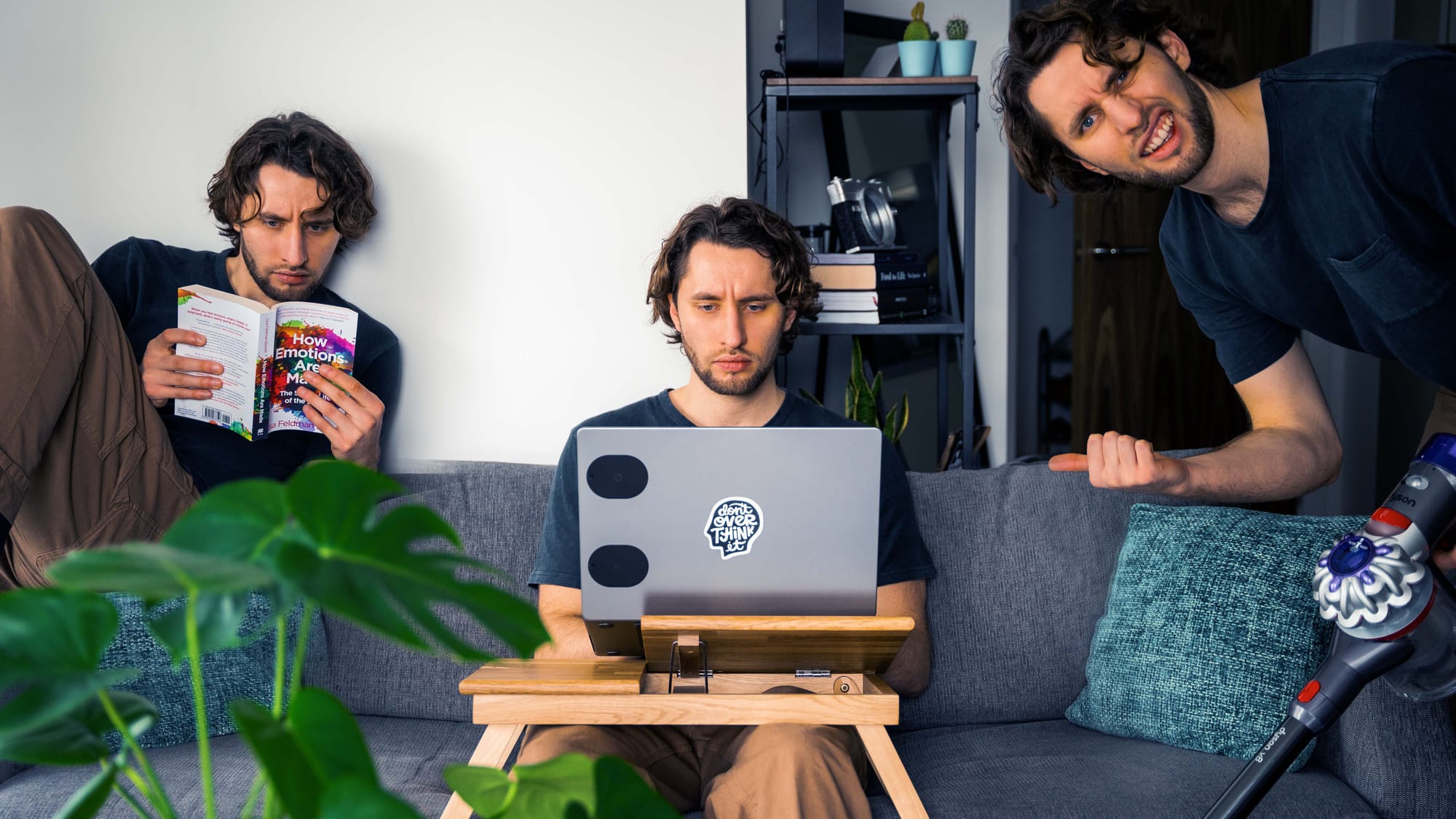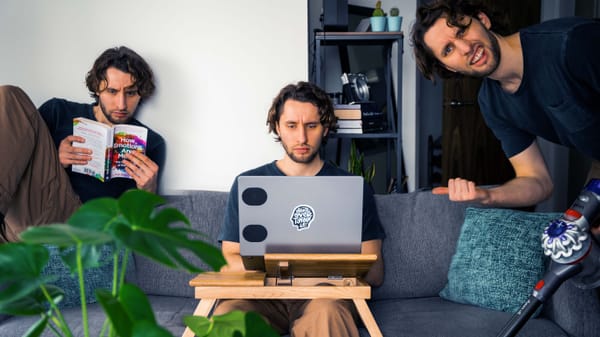Table of contents
Here’s the wrong way to think about motivation: we muster up all of our motivation before we leave the house, then go out and spend that finite amount on our most important activities. That’s wrong, and I’m going to explain the neuroscience of why.
Adrenaline (or epinephrine for the Americans) is our main source of energy in the brain. What's the main ingredient for creating adrenaline? Dopamine. Dopamine incentivises the pursuit toward your goals, and then it’s converted into adrenaline to motivate you for the journey.
To-Do Lists
First, we need some context. A Harvard study took 500 employees from a wide range of companies and got them to write down a list of everything they wanted to get done that day. They asked two-thirds of them to check off the lists as they went, and half of those people to put a couple of easy, mundane tasks at the top of their list. What did they find? The people that got those easy tasks done first, were more motivated and accomplished the most throughout the week.
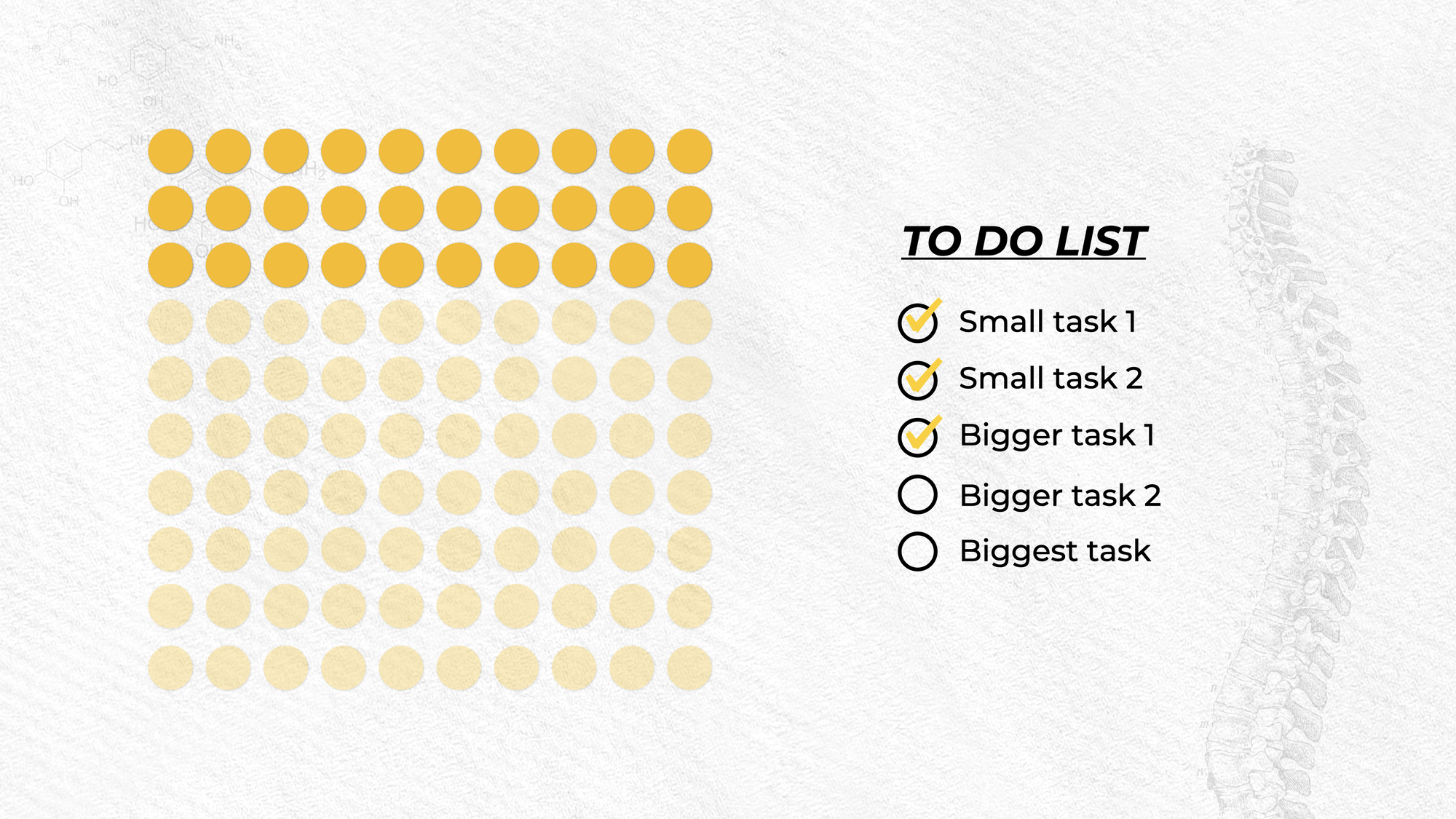
Why does doing easy tasks early in the day increase your motivation?
The Relationship Between Dopamine & Adrenaline
Understanding Dopamine
Dopamine is your main driver of pursuit, pleasure and reward.
Your tonic level of dopamine is the baseline level that tells you to seek out food or sex. I like to think of the tonic dopamine level as the pathway of pursuit. Phasic dopamine is the pathway of the prize. It’s the spike you get when you go full Bruce Bogtrotter and start devouring your chocolate fudge cake.
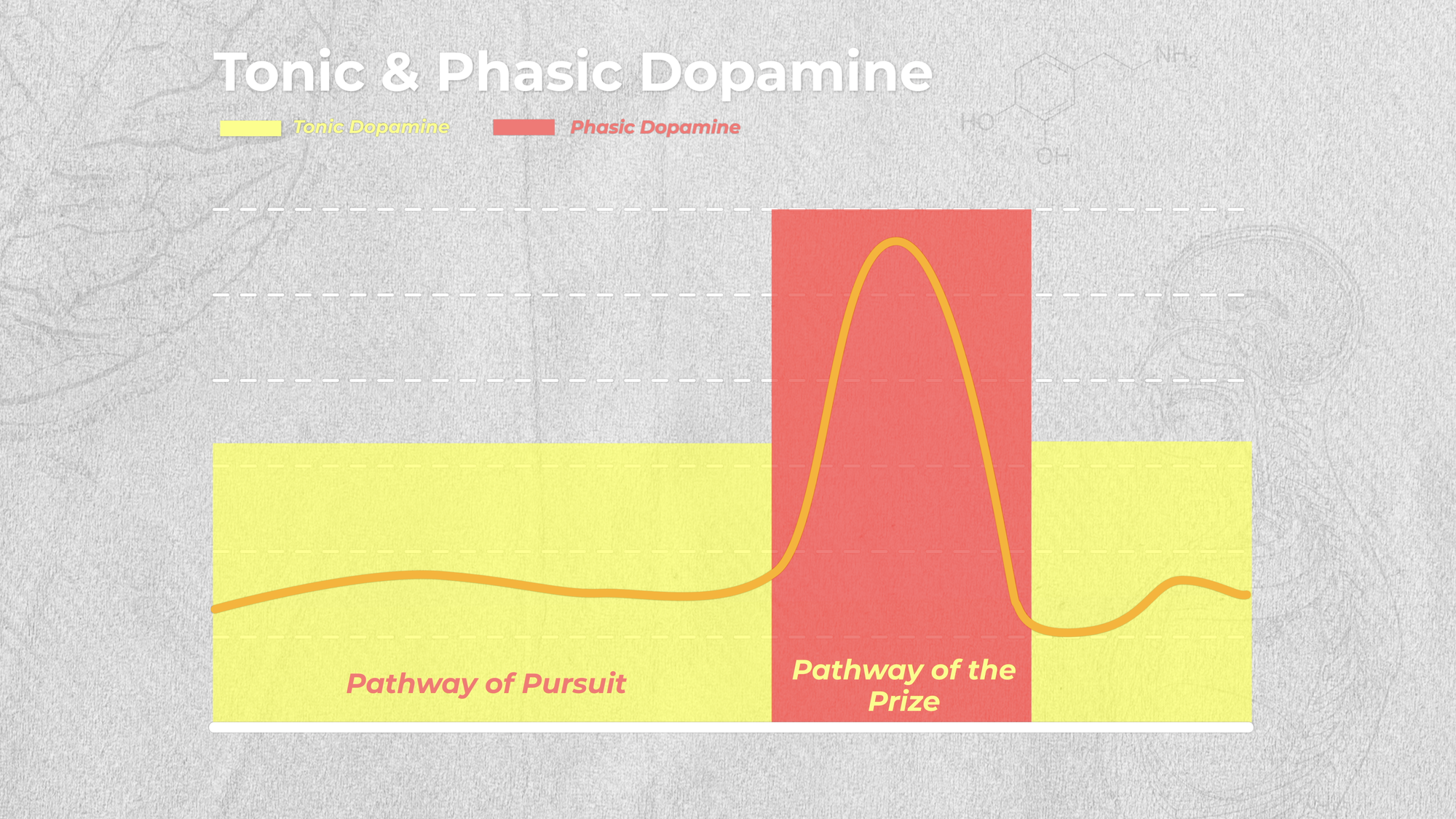
Throughout our days we open up vast numbers of dopamine cycles; micro-pursuits towards our goals. When we complete one of those cycles, we get that phasic—prize—release of dopamine.
How does that relate to the to-do lists at Harvard? By putting those easy tasks first, we’re completing a couple of dopamine cycles early on in the day, and getting our phasic release of dopamine. What happens next explains exactly how that boosts our motivation.
Dopamine → Adrenaline
Just like whipping up a cake with some eggs, flour, sugar and margarine; with the recipe of dopamine and a couple of enzymes we can energise the brain. You see, dopamine is converted into noradrenaline and adrenaline. Why does that matter? Noradrenaline and adrenaline are the brain’s main source of energy—creating drive, focus and motivation. The key thing is we’ve just directed that drive, focus and motivation with eating through the tasks on our to-do list.
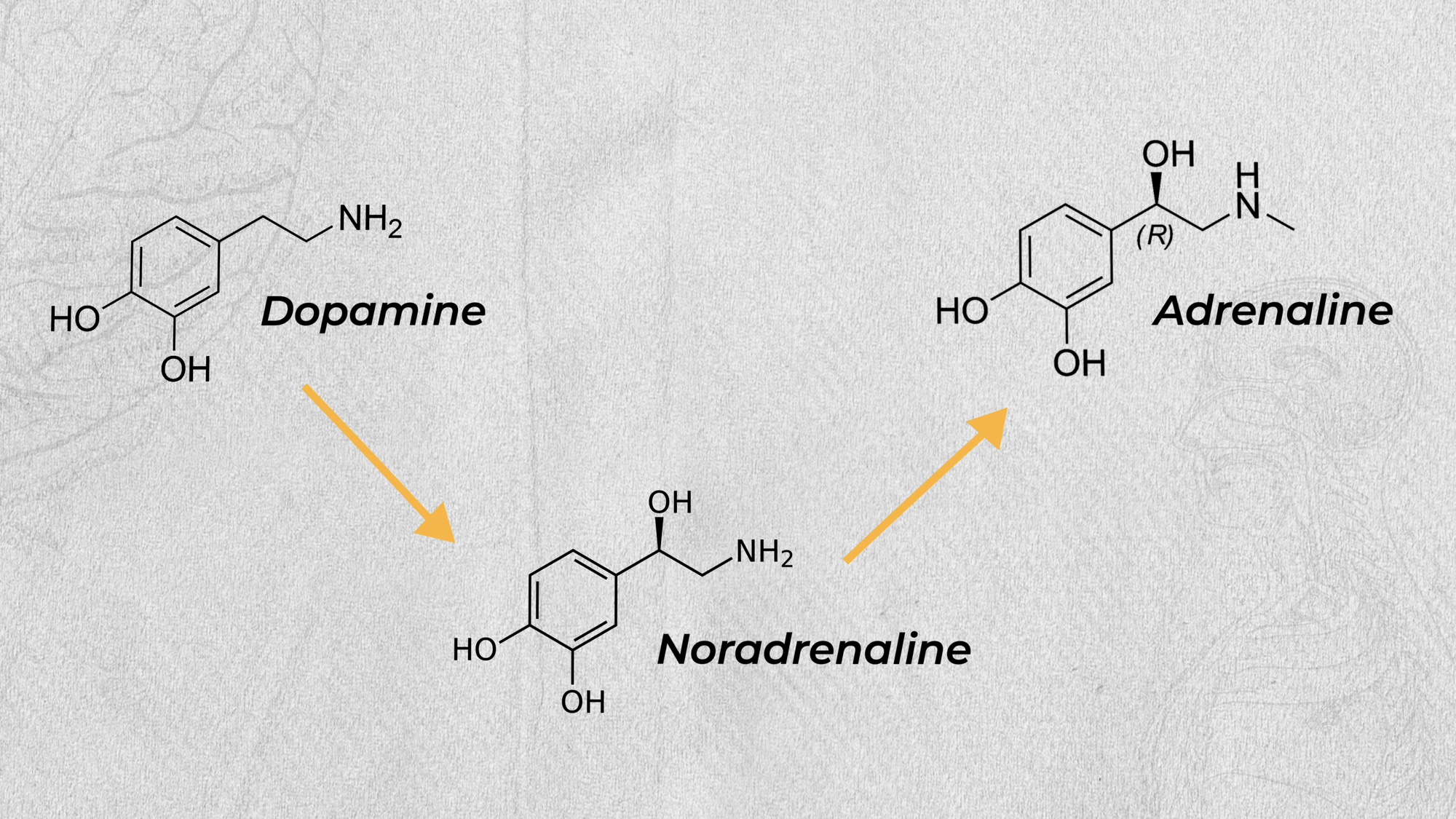
Dopamine is incentivising the pursuit, then when that’s converted to adrenaline it gives you the energy for the journey.
Daily Habits
This blog is all about behaviour change; how we can use science to make our daily habits healthier. Here's how we can apply this understanding of dopamine and adrenaline to our everyday lives.
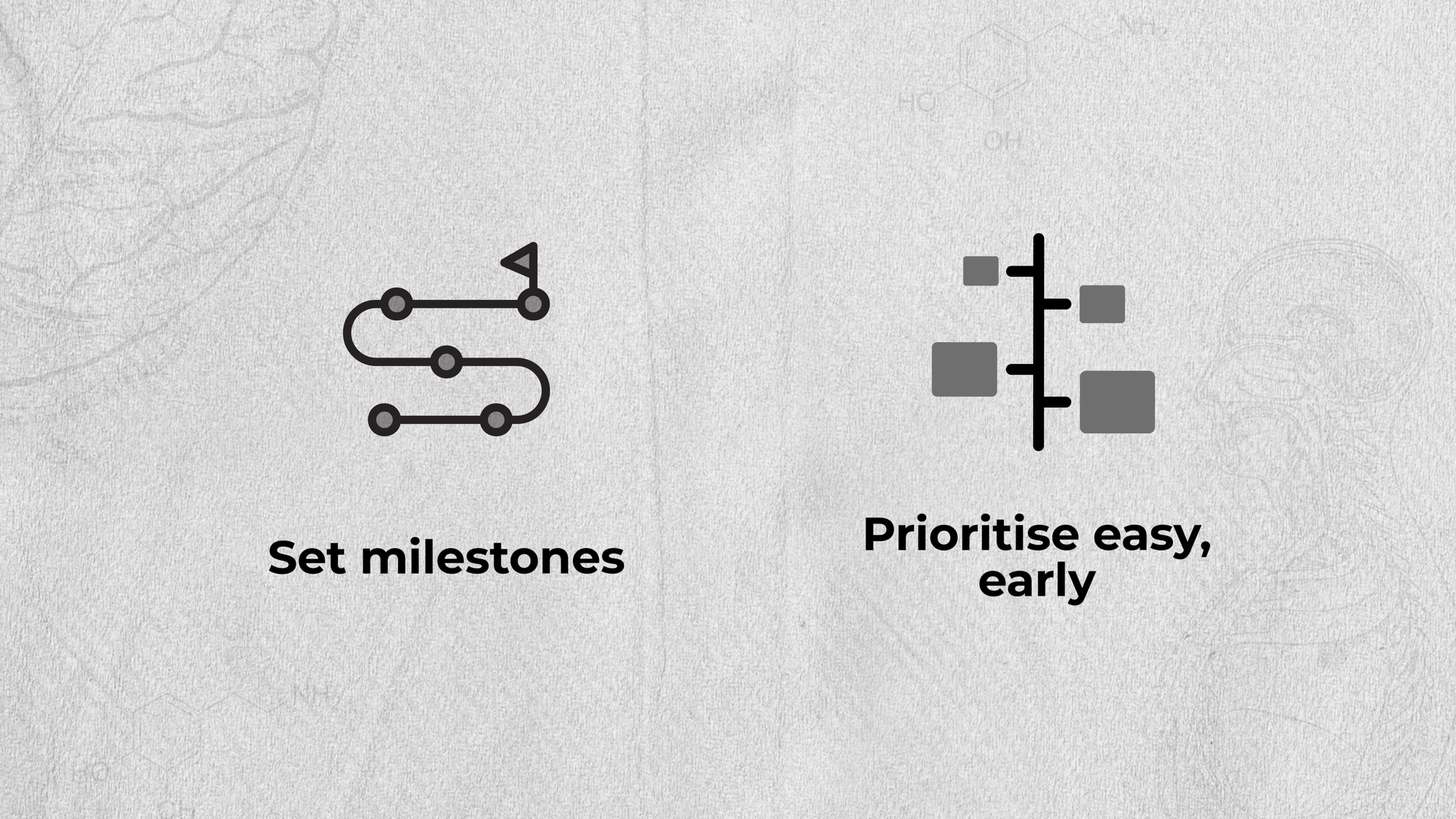
Milestoning
If you’re running a marathon, you’ve got to set milestones throughout, whether that’s 10/20/30 kilometres. Those milestones create micro-narratives. We’re nesting smaller milestones within the larger task to complete that dopamine reward circuit, convert that dopamine into adrenaline and maintain our motivation to finish the marathon.
When you’ve got a big feat, whether that’s completing an iron man, or applying to law school. Break that huge feat down into manageable milestones to build momentum towards that greater goal.
Prioritise Easy, Early
Now that you’ve broken down that big goal into smaller tasks, it’s time to order them. You can probably guess what this one’s going to be. Prioritise easy, early. Don’t start off your marathon training with a 30km run. Start with implementing a daily stretching routine to make sure you don’t get injured in training. Get your stretches done for 10 minutes, complete the circuit, then move on to your bigger goals.
